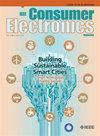预测消费者健康中circrna -疾病关联的双通道图推断和矩阵补全
IF 10.9
2区 计算机科学
Q1 ENGINEERING, ELECTRICAL & ELECTRONIC
引用次数: 0
摘要
随着消费者医疗保健的快速扩张,准确预测circrna与疾病的关联对于推进疾病诊断和实现个性化治疗至关重要。然而,传统的实验验证方法通常在人力和金钱方面都是昂贵的。在本文中,我们提出了一种高效的智能模型,基于块矩阵截断$\gamma $ -范数最小化的全局和局部相似网络的双通道图推理(TCGIBMT),旨在增强个性化治疗。首先,我们整合了环状rna和疾病之间的多个相似性,以避免依赖单一相似性的偏见。其次,我们引入了一种新的图推理技术GLGI来处理关联矩阵的稀疏性。GLGI捕获了circRNA/疾病相似性网络中的全局拓扑洞察和局部邻域细节,从而揭示了更深层次的连接,同时最大限度地减少了来自远程节点的噪声和冗余。最后,我们提出了一种新的矩阵补全方法BMTNM来进行预测。该方法构建了封装丰富信息的块矩阵,在保持稳健性能的同时大大降低了计算复杂度。截断的$\gamma $ -范数设计为通过考虑数学性质和矩阵的物理结构更有效地近似矩阵秩。在五个数据集上的综合实验表明,TCGIBMT始终优于最先进的模型。我们的方法简单,结合其强大的预测性能,使其成为集成到旨在促进更健康的患者习惯的医疗电子设备的绝佳选择。本文章由计算机程序翻译,如有差异,请以英文原文为准。
Two-Channel Graph Inference and Matrix Completion for Predicting CircRNA–Disease Associations in Consumer Health
With the rapid expansion of consumer healthcare, accurately predicting circRNA-disease associations has become essential for advancing disease diagnosis and enabling personalized therapy. However, traditional experimental validation methods are usually costly in terms of both labor and money. In this article, we present an efficient intelligent model, Two-channel Graph Inference based on Global and Local Similarity Networks with Block Matrix Truncation $\gamma $ -norm Minimization (TCGIBMT), aimed at enhancing personalized treatment. First, we integrate multiple similarities between circRNAs and diseases to avoid bias from relying on a single similarity. Second, we introduce a new graph inference technique, GLGI, to handle the sparsity of the association matrix. GLGI captures both global topological insights and local neighborhood details within the circRNA/disease similarity networks, thereby revealing deeper connections while minimizing noise and redundancy from distant nodes. Finally, we propose a novel matrix completion method, BMTNM, to perform the prediction. This method constructs block matrices that encapsulate rich information, substantially reducing computational complexity while retaining robust performance. The truncated $\gamma $ -norm is designed to approximate the matrix rank more effectively by considering both mathematical properties and the matrix’s physical structure. Comprehensive experiments on five datasets show that TCGIBMT consistently outperforms the state-of-the-art model. Our approach’s simplicity, combined with its robust predictive performance, makes it an excellent choice for integration into medical electronic devices aimed at promoting healthier patient habits.
求助全文
通过发布文献求助,成功后即可免费获取论文全文。
去求助
来源期刊
CiteScore
7.70
自引率
9.30%
发文量
59
审稿时长
3.3 months
期刊介绍:
The main focus for the IEEE Transactions on Consumer Electronics is the engineering and research aspects of the theory, design, construction, manufacture or end use of mass market electronics, systems, software and services for consumers.

 求助内容:
求助内容: 应助结果提醒方式:
应助结果提醒方式:


